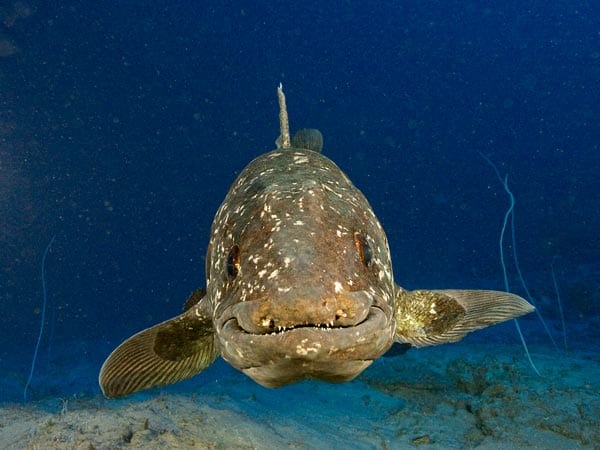A new species of hundred-million-year-old coelacanth has been found, according to a new analysis of bone fragments.
The coelacanth research of SMU paleontology doctoral student John Graf has been covered by science journalist Ker Than for National Geographic’s Daily News web site. Graf identified a new species of coelacanth from fossil fish bones discovered in Texas.
Watch a video about the fossil, “100 million-year-old coelacanth discovered in Texas is new fish species from Cretaceous.”
Graf identified the fish from a 100 million-year-old skull fossil. He named the new species Reidus hilli. Graf said the new coelacanth is the first found in the Dallas-Fort Worth area. Discovered in the Duck Creek Formation, the fossil dates to the Cretaceous, making it the youngest coelacanth discovered in Texas.
EXCERPT:
By Ker Than
National Geographic News
One of the world’s oldest types of fish, coelacanths (pronounced SEE-la-kanths) are primitive, slow-moving fish that had been thought extinct until an individual was found off Africa in 1938. There are now over 40 known coelacanth species. The two that live today are called living fossils because they have remained virtually unchanged for 320 million years.The newfound coelacanth has been dubbed Reidus hilli in honor of its discoverer Robert Reid, an artist who found the fish’s fossilized skull near his home in Forth Worth, Texas, in the late 1980s.
Reid donated the skull to nearby Southern Methodist University, where scientists quickly identified it based on unique bones, called gular plates, on the underside of its jaw.
“Almost from the get-go, we knew it was a coelacanth,” said study leader John Graf, a paleontologist at the university.
However, it wasn’t until Graf recently studied the skull bones in detail that he determined they had belonged to a previously unknown species of the ancient fish group.
Follow SMU Research on Twitter, @smuresearch.
For more SMU research see www.smuresearch.com.
SMU is a nationally ranked private university in Dallas founded 100 years ago. Today, SMU enrolls nearly 11,000 students who benefit from the academic opportunities and international reach of seven degree-granting schools. For more information, www.smu.edu.
SMU has an uplink facility located on campus for live TV, radio, or online interviews. To speak with an SMU expert or book an SMU guest in the studio, call SMU News & Communications at 214-768-7650.



 Academic achievement improved among students active in structured after-school programs
Academic achievement improved among students active in structured after-school programs New study on kingship and sainthood in Islam offers a striking new historical perspective
New study on kingship and sainthood in Islam offers a striking new historical perspective